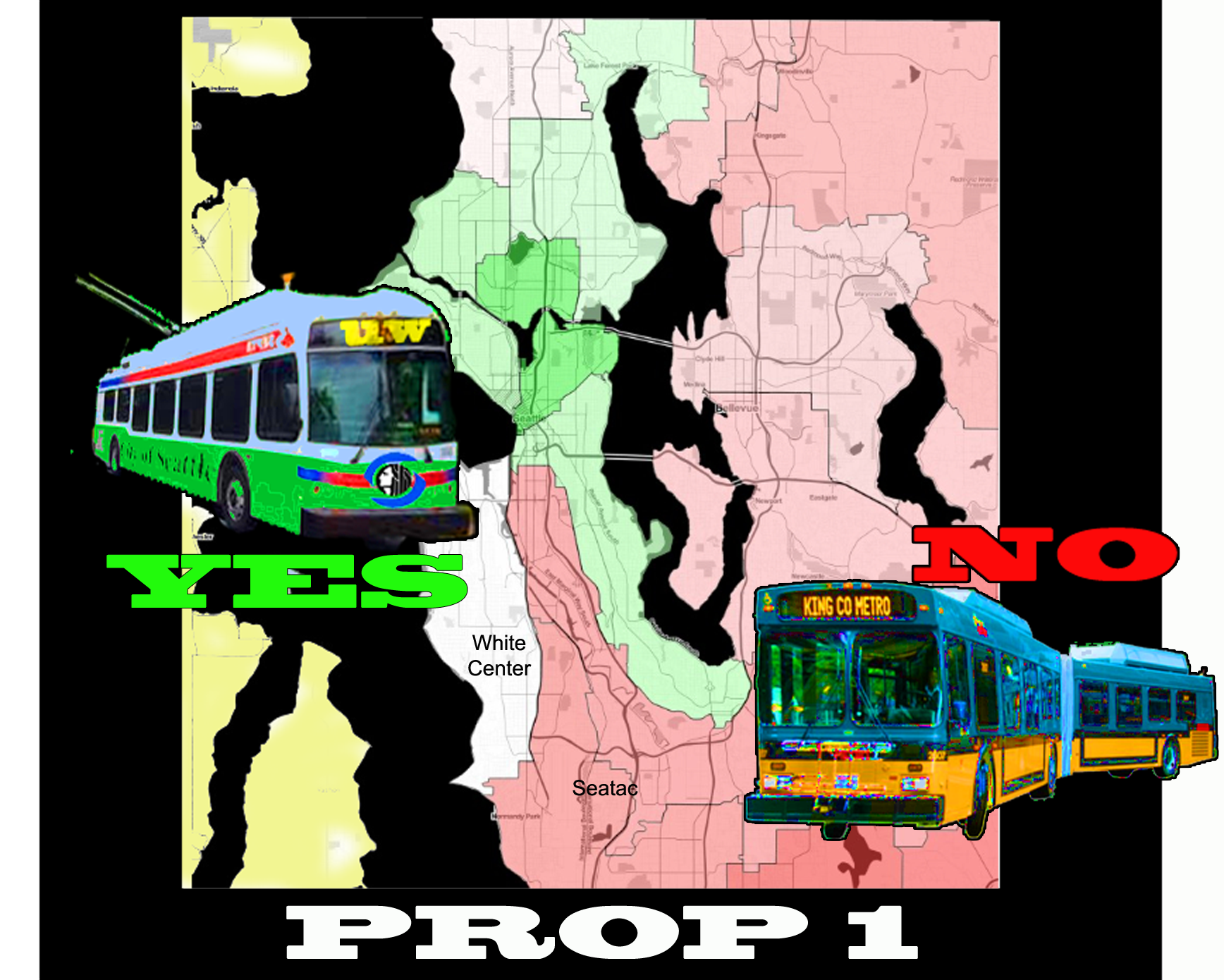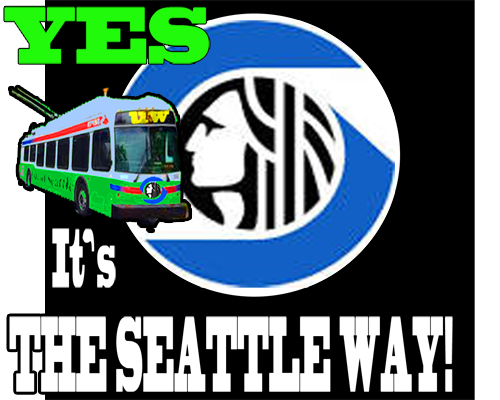 This map shows clearly why Proposition 1 failed.
This map shows clearly why Proposition 1 failed.
People living across the lake… Bellevue, Medina, Redmond and Issaquah … choose to live there because they love cars. They do not want to pay for all those buses running around urban Seattle. These people are commuters.
The commuter attitude toward Prop. 1 is no different than their opposition on the east side to toll roads. Why should they be taxed to pay for getting into Seattle? Or for that matter, for commuting between Issaquah and Microsoft? Or for driving around Bellevue?
The other class of people affected by Prop 1 might be called residents, that is residents of Seattle. Residents of Seattle’s affluent neighborhoods voted overwhelmingly for Prop 1. I am a bit more disappointed in the poor vote from residents of poor neighborhoods. People living in White Center or the areas around SeaTac are the low pid workers Seattle is targeting with their $15 minimum wage campaign. These residents , need buses to get to work. Unfortunately, in Seattle as elsewhere , poor people do not vote!
Finally, the distribution of votes raises a very important question for the UW. Where do UW staff and faculty live? The turnout for this election was, as expected for a special election, lousy. About 37% of the voters exercised their privilege. 237,000 voted against the proposition and 202,000 voted for it. My question is: how did the UW community vote? This map does not answer that question at all. Few b our community, by which I mean the faculty and staff, are residents of the green tinted areas around U District and Wallingford. A very large number of us live on the Eastside or north of University Village. How did these people, estimated to include 30,000 votes exercise their privilege? My bet, with no way of actually accessing the data, is that the UW vote looked pretty much like this map.
Frankly, I think the answer is obvious. The time has come for Seattle to pull out of Metro . The interests of voters in suburban Seattle are not consistent with the interests of voters within Seattle . As Seattle streets turn into canyons bounded by multistory apartment houses, people living in the city are generally affluent, These residents , need and want transportation to get around the city . The needs and wants of Seattle residents are very different from commuters who see buses and trolleys as an alternative to their automobiles only when there is a need to teleport into and out of the city
There is no reason that the commuter population should not pay full fare for their Metro buses . 
THE SEATTLE WAY and The Upass
Seattle, needs its own transportation district. I suggest that we pattern this after the Upass system, the University of Washington uses Upass to encourage commuters to use public transportation . Upasses are sold, given as incentives to car pools,or included in parking fees.
The city system would be called Way Pass and be marketed as part of “THE SEATTLE WAY .”
THE SEATTLE WAY would be funded in three ways.
1. Residents of Seattle would ay an annual real estate tax.
2. Owners of parking spaces would pay a tax their fees.
3. Businesses could purchase Way Passes for their employees or, in the case of hotels, for their guests. Museums and arts facilities might include THE SEATTLE WAY in their mmeebrship fees.
The taxes paid by residents of Seattle would be reimbursed by receiving a Seattle Way Pass . The Way Pass would give greatly reduced fares to people living in Seattle. Commuters, coming into the city, would pay full fare unless their employers decided to purchase. Way Passes might also offer reduced fees for other Seattle based facilities such as the museums, the soo, and Seattle Center.
It’s THE SEATTLE WAY!
202,162 45.99%
No 237,420